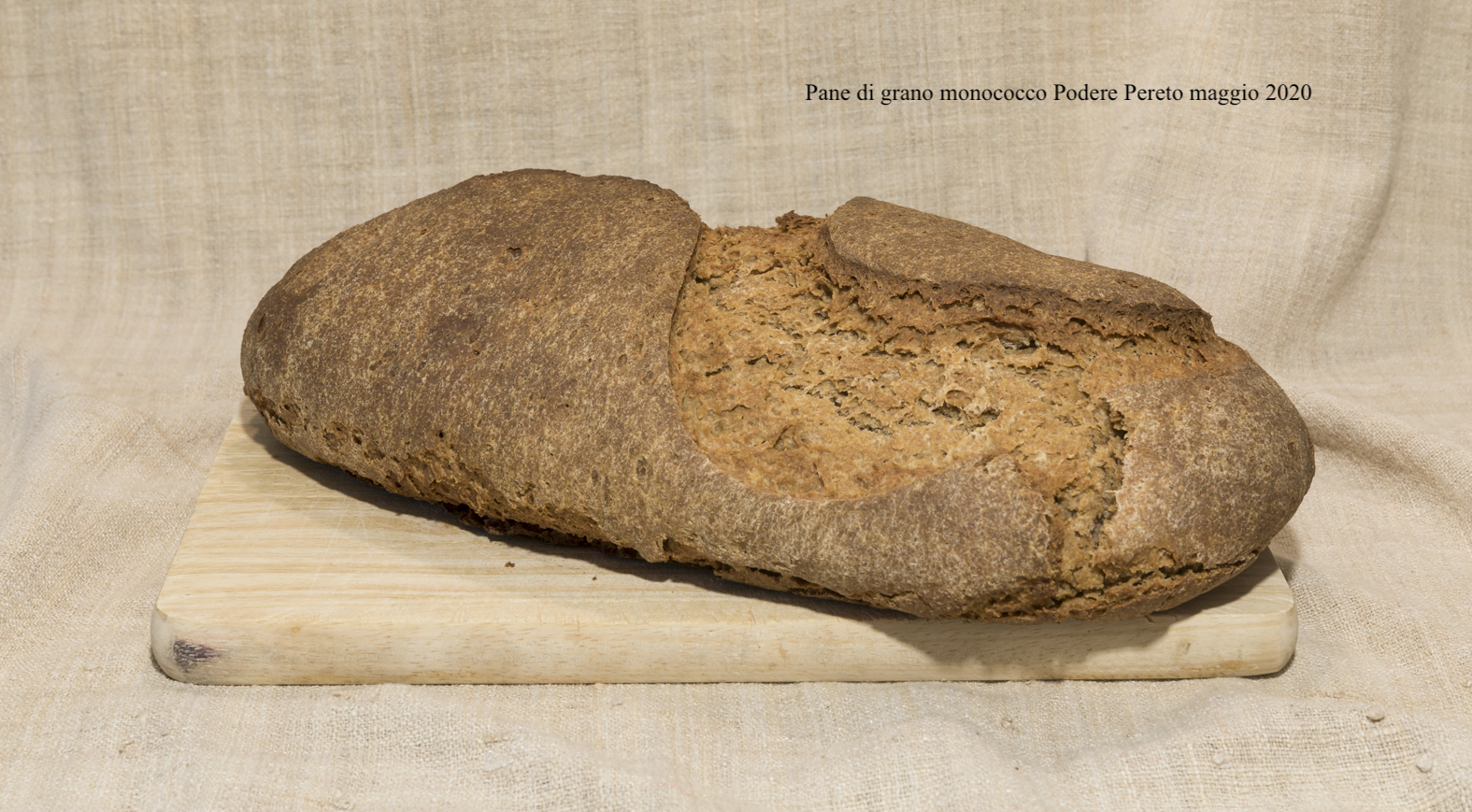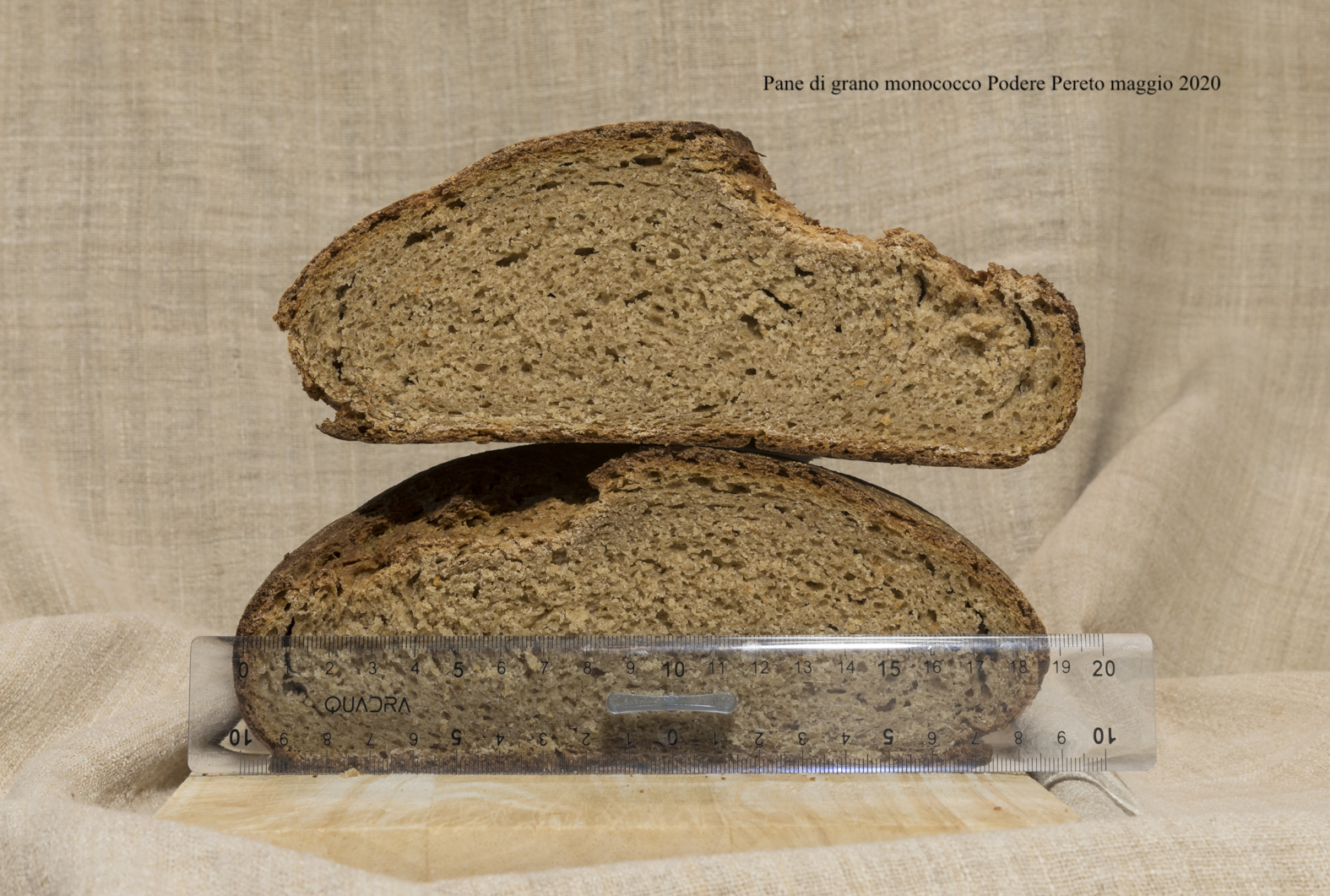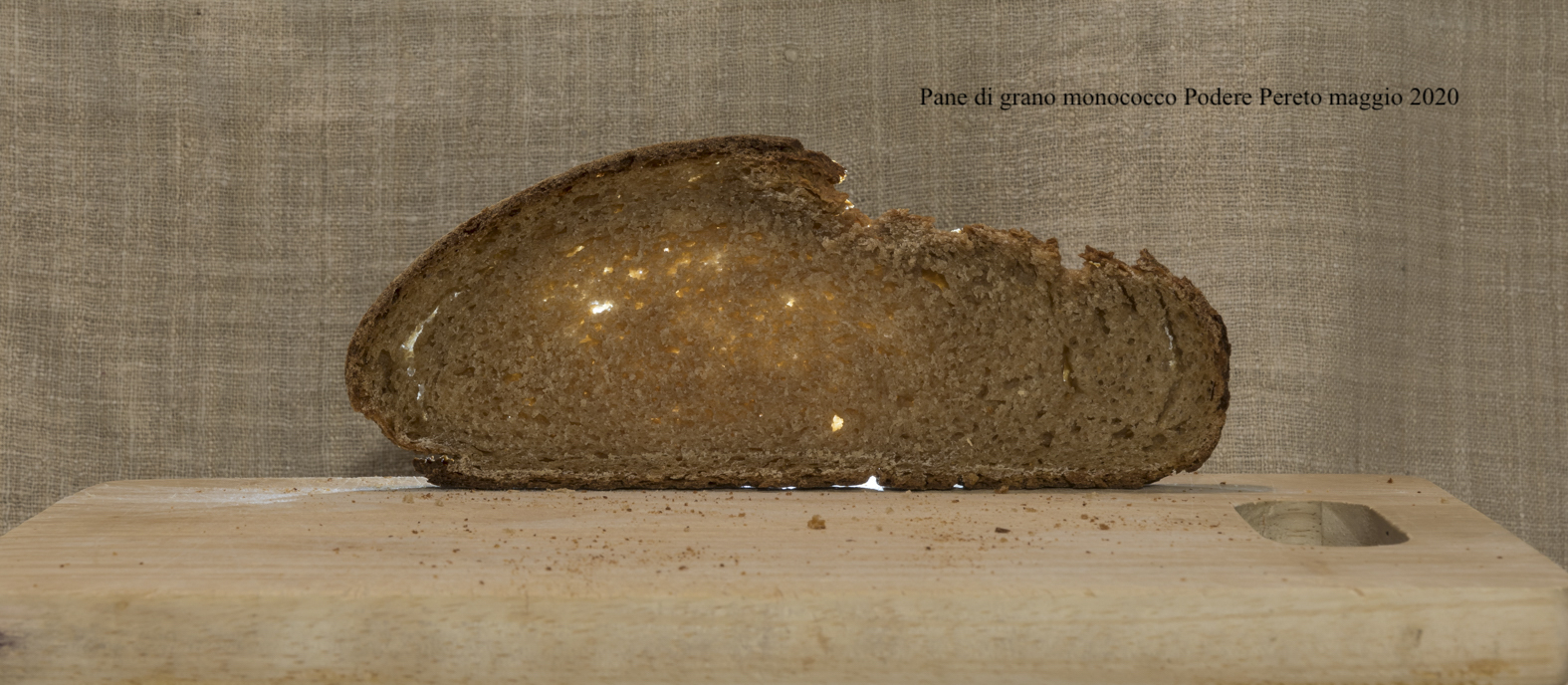The state and health of the intestinal microbiota is at the center of many studies aimed at studying the role of the microbiota in diseases and how to intervene for preventive or curative purposes.
The set of microorganisms that populate our digestive system (microbiota) includes good bacterial strains but harmful ones can sometimes also be present. Indigenous strains (those that characterize our microbiota) hinder the colonization of the intestine by new microbes, including pathogenic ones. Vitamin K, for example, is synthesized by good bacteria present. Indigenous bacteria digest and ferment the favonoids contained in fruits and vegetables, promoting the production of substances that have protective effects on cardiovascular health. An essential function that our bacteria perform is to produce short-chain fatty acids, especially butyric acid. These acids protect the intestine from inflammation and the onset of tumors.
La ricerca “In Vivo Effects of Einkorn Wheat (Triticum monococcum) Bread on the Intestinal Microbiota, Metabolome, and on the Glycemic and Insulinemic Response in the Pig Model” ha questo tema come focus.
Highlighted:
Abstract: “Einkorn wheat (Triticum monococcum) is characterized by high content of proteins, bioactive compounds, such as polyunsaturated fatty acids, fructans, tocols, carotenoids, alkylresorcinols, and phytosterols, and lower α-, β -amylase and lipoxygenase activities compared to polyploid wheat. These features make einkorn flour a good candidate to provide healthier foods. In the present study, we investigated the effects of einkorn bread (EB) on the intestinal physiology and metabolism of the pig model by characterizing the glycemic and insulinemic response, and the microbiota and metabolome profiles. Sixteen commercial hybrid pigs were enrolled in the study; four pigs were used to characterize postprandial glycemic and insulinemic responses and twelve pigs underwent a 30-day dietary intervention to assess microbiota and metabolome changes after EB or standard wheat bread (WB) consumption. The postprandial insulin rise after an EB meal was characterized by a lower absolute level, and, as also observed for glucose, by a biphasic shape in contrast to that in response to a WB meal. The consumption of EB led to enrichment in short-chain fatty acid producers (e.g., Blautia, Faecalibacterium, and Oscillospira) in the gut microbiota and to higher metabolic diversity with lower content of succinate, probably related to improved absorption and therefore promoting intestinal gluconeogenesis. The observed changes, at both a compositional and metabolic scale, strongly suggest that EB consumption may support a health-promoting configuration of the intestinal ecosystem.”
omissis……
“Einkorn wheat (Triticum monococcum) was one of the first crops domesticated approximately 12,000 years ago in the Near East, alongside emmer wheat (Triticum dicoccum). Typically, einkorn was cultivated on marginal agricultural land, being able to survive in harsh environments and poor soils where other types of wheat could not survive. Spelt wheat (Triticum spelta) represents a hexaploid series of the Triticum genome constitution, which is characterized by great adaptation to a wider range of environments [1]. When compared to polyploid wheats, it has a higher content of proteins and some well recognised bioactive compounds, such as polyunsaturated fatty acids, fructans, tocols, carotenoids, alkylresorcinols, phytosterols, and lower α-, β -amylase and lipoxygenase activities [2]. These compositional traits make einkorn flour a good candidate to provide healthier foods. Specifically, the presence of antioxidant compounds and the protein profile are expected to be related to reduced cardiovascular disease and hypoallergenic effects, respectively. In particular, einkorn was shown to express few T-cell stimulatory gluten peptides, with important implications for celiac disease [3]. In vitro digested einkorn breads evidenced their higher carotenoid level as compared to modern wheats and showed a greater anti-inflammatory effect than the control (wheat bread) in Caco-2 intestinal epithelial cells [4]. Given the crucial role of the gut microbiota in the metabolism of dietary compounds, including the bio-activation of plant polyphenols into health-promoting metabolites and the production of short-chain fatty acids (SCFAs, mainly acetate, propionate, and butyrate) from fiber fermentation, as major orchestrators of the host physiology [5].”
omissis….
“Specifically, for einkorn, one of the most representative ancient grains, in vitro results evidenced a good healthy potential because of its effects on blood concentrations of glucose and insulin with a view to using einkorn-based foods in metabolic diseases [7,8], but none has considered changes in the microbiota structure as well as in the intestinal repertoire of metabolites, potentially influencing multiple metabolic and immunological pathways that are relevant to host health. In an attempt to bridge this gap, here we explored the gut microbiota and metabolome of pigs fed with an einkorn versus wheat-based bread. “
omissis……
Conclusions. “In summary, through the pig model we demonstrated a beneficial impact of EB on several aspects of the host physiology, including insulin release, fecal consistency, and microbiota and metabolome profiles, both in feces and intestinal contents. According to our findings, the consumption of EB could reduce the AUC of the first insulin peak, thus prolonging the sense of satiety. Moreover, it could modulate the intestinal ecosystem, at both the compositional and metabolic scale, towards a configuration specifically enriched in health-promoting bacteria and showing distinct metabolic signatures potentially contributing to maintaining the host homeostasis. The use of the pig model allowed, unlike in clinical human trials, the sampling of the mucosa and the content of the small intestine, thus widening the knowledge on the complexity of the food-microbiota-host interaction along the gastrointestinal tracts. The observed positive effects could be driven by the synergistic interaction of many factors, including, inter alia, the fermentation process, the food matrix, and the flour components, which result in gut-mediated effects. The evaluation of the beneficial effects of a real food is far more complex than using purified compounds, as a direct cause-effect relationship can seldom be ascribed to a single component. It is indeed foods, and not the single components, which create the diet, and exploring their complexity can better reflect their overall role on health. Although further studies and clinical trials are needed, the results that are herein reported represent a first contribution to unravel the anti-inflammatory potential of einkorn-based foods.”
“In Vivo Effects of Einkorn Wheat (Triticum monococcum) Bread on the Intestinal Microbiota, Metabolome, and on the Glycemic and Insulinemic Response in the Pig Model”. Francesca Barone et al. Nutrients 2019, 11, 16; doi:10.3390/nu11010016
Note:
A – Pigs have significant anatomical and physiological similarities with humans, particularly with regard to the intestinal structure, with comparable transit time and analogous digestive and absorptive processes [9,10]. Furthermore, like humans, they are true omnivores, unlike other potential mammalian models, such as dogs, cats, ruminants, rabbits, and rodents, which have evolutionarily developed alternative digestive strategies. Finally, both pigs and humans are colon fermenters and have similar colonic microbiota composition. All of these features make the pig one of the most important models in the field of nutrition [11,12]. Through the pig model, in the present study we investigated the impact of a 30-day nutritional intervention with einkorn or wheat bread on the intestinal ecosystem, by means of next-generation sequencing of the 16S rRNA gene and metabolomics of fecal samples, as well as samples from ileal and colonic compartments. The effects of einkorn vs. wheat bread on animal physiology, blood parameters, postprandial glycemia, and insulin response were also evaluated.
B – The metabolome refers to the complete set of small-molecule chemicals found within a biological sample. The biological sample can be a cell, a cellular organelle, an organ, a tissue, a tissue extract, a biofluid or an entire organism. The small molecule chemicals found in a given metabolome may include both endogenous metabolites that are naturally produced by an organism (such as amino acids, organic acids, nucleic acids, fatty acids, amines, sugars, vitamins, co-factors, pigments, antibiotics, etc.) as well as exogenous chemicals (such as drugs, environmental contaminants, food additives, toxins and other xenobiotics) that are not naturally produced by an organism.
The metabolome refers to the complete set of small-molecule chemicals found within a biological sample. The biological sample can be a cell, a cellular organelle, an organ, a tissue, a tissue extract, a biofluid or an entire organism. The small molecule chemicals found in a given metabolome may include both endogenous metabolites that are naturally produced by an organism (such as amino acids, organic acids, nucleic acids, fatty acids, amines, sugars, vitamins, co-factors, pigments, antibiotics, etc.) as well as exogenous chemicals (such as drugs, environmental contaminants, food additives, toxins and other xenobiotics) that are not naturally produced by an organism.






